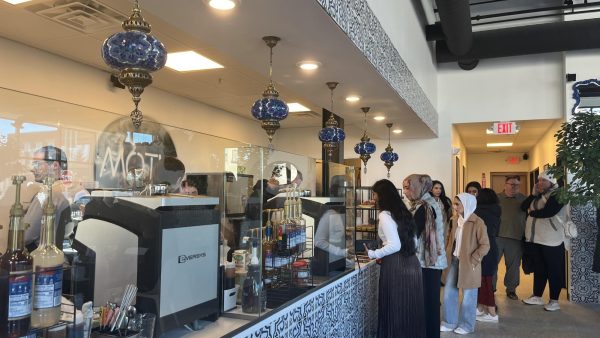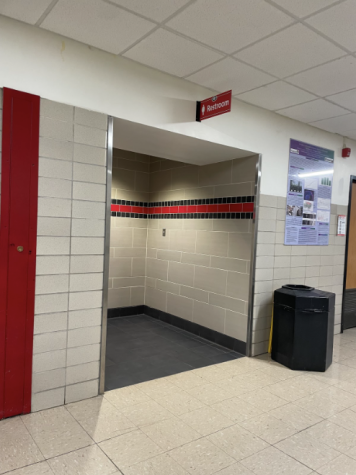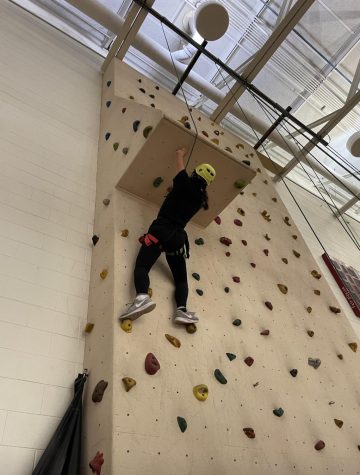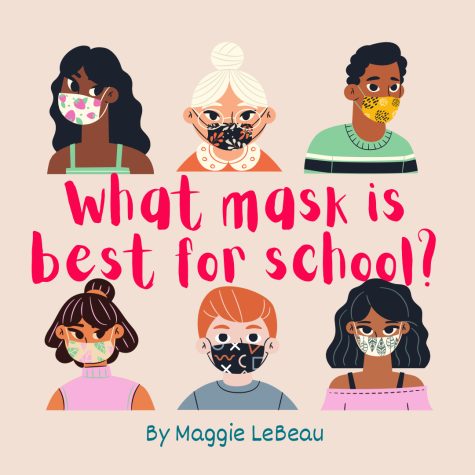Transition into former schedule is favorable for District 87

During this school year, District 87 has changed the schedule 6 times, but the most recent shift in schedule is by far the most drastic. Previously students attended four class periods for 70 minutes daily, besides Wednesday which was all 8 periods. Students were dismissed at 12:30, without eating lunch. Now East follows the pre-pandemic schedule: 8 periods a day, 5 days a week, and dismissal at 2:30.
The shift in schedule is beneficial to both students and faculty for numerous reasons. Many families have been pushing for the district to reopen schools completely because of their frustration with a lack of normalcy, long commutes, shorter class periods, school lunch, retention of information, and AP test preparation.
There are so many factors into having a sense of normalcy. Getting hand copies of worksheets, walking down the hallway of the school, and simply getting yelled at by a teacher. The roar of a classroom can bring a smile to the faces of teachers and students. For months teachers were buried with black screens and silence on Zoom, and being able to see students in person every day is extraordinary.
Although we are in the midst of a pandemic, it’s hard to define what ordinary is. Students have become well acquainted with the idea of seeing only one face on Zoom, hearing no response to teacher’s questions, and feeling the pandemic’s daily loneliness. Normalcy is crucial for academic purposes, as well as our mental health. This shift in schedule is a step in the right direction.
Although zoom has allowed most classes to be taught in the comfort of student’s beds, some classes still require in-person experience to fully encompass all of the course’s concepts. A lot of these are electives such as art, metals, woodwork, cooking, and engineering courses.
Covid has limited the vital hands-on experiences these courses provide in a normal year. Teachers have had to manipulate or completely change projects they normally do to fit with hybrid and the limitations of Covid. By going back to in-person, teachers and students will be allowed to regain some of these projects and experiences.
One of the trade-offs that school administrators had to make during summer planning was not being able to have classes run every day. The four periods of 70 minutes each do cut down on the exposure students have to each other.
There was no way to provide space for students to eat while keeping a 6-feet distance, so school days were only half days. But now that three feet distancing is allowed, students can eat lunch at school.
However, it comes at the cost of hurting students’ retention of information. For instance, someone might have a science test on Monday and find themselves having to study much harder to prepare because they haven’t interacted with much of the material since Wednesday of the previous week.
This is a problem especially for AP classes, where retention of information is imperative for success on the May AP tests. However, the return to all eight periods, five days a week will significantly improve students’ ability to recall and utilize the information learned in each of their classes, thus improving academic performance.
With AP testing around the corner, many students and teachers are worried about covering a sufficient amount of material by the test date. To students, the hour and ten minutes block schedule used for hybrid might seem long but is actually less time for the overall week compared to our regular school schedule.
With hybrid, students receive two-hour and ten-minute days and one 40 minute day for each class equaling 180 minutes in total. With our regular schedule, students receive about 240 minutes a week for each class. Switching back to the old schedule will hopefully allow students and teachers time to catch up for AP testing.
Anyone who is or lives with a teenager knows that their attention span is fleeting. 70 minute class periods are not doing any good to high school students. Most are guilty of not paying attention and instead are staring out the window at parking lots, piles of snow, or leafless trees. After spring break the periods will be around 48 minutes which is much better for students. This will help them focus and not drift off so easily, as well as giving them better study and social routines.
Furthermore, the commute to East can be draining for many students. Around half of the student population has to travel approximately an hour to school and home round trip. Because of the shorter schedule this year, students didn’t see the value in driving an hour just to go to four class periods, and not even being able to stay for extracurriculars.
During remote learning, a bedroom, living room, or library became a permanent classroom for students. Taking every single class in the same place confuses that notion, and does not help many students. Therefore, returning to school and getting out of the house will allow students to ultimately perform better.
Another important issue that may find a solution once we return to fully in-person learning is eating in school. For many students, eating in school provides many benefits. For some, it is a daily source of good nutrition, which they may not be able to attain at home. For many others, it is a time and place to interact with friends without having to worry about interrupting class or turning in your next assignment.
Lunch becomes a time of relaxation, and a time away from screens, something that all East teenagers desperately need after such a long time with E-Learning. While at a more distanced capacity, students may finally return to a place where they can see and talk to their friends, and no longer miss out on a period of the day that many people jokingly consider their favorite “subject.”
Seeing friends more often brings back a lot of normalcy and lost memories. Although there is the risk of spreading COVID, having an actual conversation with people and being able to share a laugh, and being in their presence is something students underappreciated before. Having the technology to FaceTime and Zoom can’t compete with the experience of a face-to-face conversation.
All in all, the return to full school days is a significant and welcomed step back towards the ever-elusive “normal.” Although circumstances will continue to be less than ideal for some time, hopefully, the district’s decision will help “unprecedented” to be weeded out of our daily vocabulary.
And as students return to the classrooms, it’s easier to look at the future with optimism, hope that one day we’ll be able to hug our friends without masks and graduate with a huge crowd cheering us on, and the knowledge that someday that will be possible.
The Editorial Board is an anonymous group of students who contribute opinions about local issues to the Echo.












